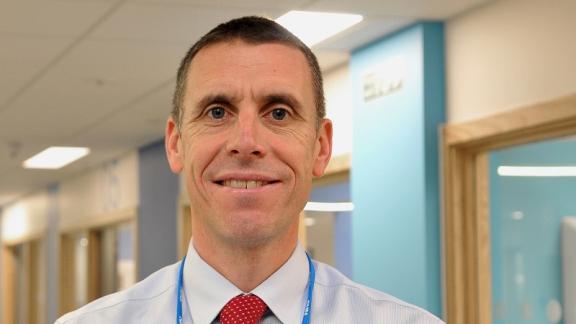How collaboration is propelling change in Croydon

If health and care leaders are agreed on one thing, it’s that collaboration is far from easy. Here, Matthew Kershaw shares how organisations in Croydon have tackled the task and how the local health and care system, staff and residents are reaping the benefit.
In Croydon, we have one of the fastest-growing populations in London. Increased investment has brought new people to the borough and we now have one of the youngest populations in London, with more than 120,000 residents aged under 25. At the same time, we have an increasing number of older people in our community — almost a fifth of Croydon residents are expected to be aged over 65 within the next ten years.
These demographic changes place new demands on health and care services in the borough. Medical advances are helping us to tackle these challenges and supporting people to live longer, but this means many people have to manage often multiple, long-term health conditions. This is compounded by significant financial challenges in local government, which have put social care services under real strain.
So how do we address this?
Meeting the needs of our residents requires an approach that is beyond the gift of any one organisation. We know a ‘do nothing’ scenario would result in a financial gap of c£100m by 2023/24 across health and social care, significantly impacting the sustainability and quality of services for our residents.
In 2017, after a period of closer working between partners, we agreed an alliance agreement committing us to shared approaches and principles for transforming local health and care provision. Our partnership — the One Croydon Alliance — includes Croydon Council, Croydon Clinical Commissioning Group, Croydon GP Collaborative, Croydon Health Services NHS Trust, South London and Maudsley NHS Foundation Trust and Age UK Croydon. We are a place-based system within the South West London Sustainability and Transformation Partnership.
Collaborating with local partners has not always been easy. We needed to create mechanisms which would help us move away from traditional ways of working that favoured the organisation over the system. So, what has the One Croydon Alliance agreement meant in practice?
We now have several forums for sharing issues, developing solutions and making decisions, including a transformation board, made up of chief executives and clinicians; a delivery board, which holds to account partners; and a shared programme management office (PMO), which is co-located and facilitated by an ‘open-book approach’ between partners.
We also have several joint roles across relevant organisations including a chief pharmacist between CCG and trust and a chief nurse for Croydon. More recently, we have made further joint Croydon place-based appointments; for example, we jointly appointed a chief executive and place-based leader for health, a joint chief financial officer and a joint director of strategy and transformation.
We also have established several joint forums, such as the Cost and Quality Oversight Board (CQOB) to monitor progress on cost improvement programmes and quality, innovation, productivity and prevention (QIPP) and the finance committee in common, to review the ‘one version of the truth’ and ensure collaboration.
All of which have been important mechanisms to help new ways of working. But we also needed to create system-wide solutions to meet the health and social care needs of our population while delivering high-quality care.
Within the alliance, we can now do essential planning together — building, not dividing, relationships between our providers and commissioners. For example, we decided that more money should move from the CCG to the council to support additional social care, which is a win-win as it supports the timely discharge of patients requiring reablement.
We also understand demand and capacity better. For example, our shared PMO produces a weekly pack of KPIs for CQOB, highlighting, among other things, bed stock, elective activity by provider, nursing and medical bookings and spend, length of stay for both acute and mental health. All of which helps provide our partners with a ‘single view of the truth’ to plan from accordingly.
We also wanted to fundamentally address the perverse incentives to demand and capacity. Payment by Results (PbR) contracts had created incentives in acute trusts to drive up activity to increase income and an adverse effect of the CCGs implementing QIPP on demand with no recognition that the providers could not pull out an equivalent amount of costs.
We decided that a block contract would be more suitable, based on a shared understanding of demand and capacity. Ultimately, we are looking towards a capitated payment system to further this drive towards population health improvements, moving further away from previously counterproductive incentives to integrated care.
In 19/20, we have implemented a shared control total to ensure we continue to meet our goals as a system and not just as individual organisations. We are also moving towards making partnerships more formal by having single budgets across organisations with agreed risk share arrangements, thereby removing some key organisational barriers.
The progress of the One Croydon Alliance has been significant. But it would not have been possible without individuals across the system working collaboratively, while respecting the independence of each organisation. The importance of continual workforce development and cultural change also cannot be understated.
Overall, I am immensely proud of how people have got to grips with the issues and challenges facing our population, recognising the organisational interdependencies and putting collaboration at the heart of the solution.
Matthew Kershaw is chief executive of Croydon Health Services NHS Trust and place-based leader for health.



